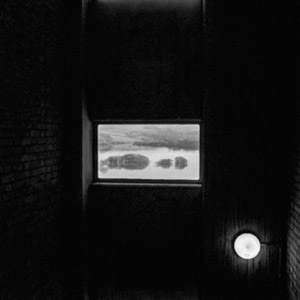Emptyset Material
When Bristolian duo Emptyset (a.k.a. James Ginzburg and Paul Purgas) released Medium last spring, it […]

When Bristolian duo Emptyset (a.k.a. James Ginzburg and Paul Purgas) released Medium last spring, it simultaneously marked the producers’ first album created outside the studio environment and their first study of a sonic atmosphere’s signature reverberant characteristics. Collecting source material and composing entirely inside an old, unfinished mansion in the Cotswolds, the pair attempted to capture the specific sound emitted by the location’s interior, in hopes of creating a sort of personal sonic blueprint. Emptyset’s latest album, Material, finds the UK outfit revisiting these aims and exploring three distinct locations in the process: a decommissioned nuclear power plant, an underground concrete testing bunker, and a 22-mile medieval mine.
Given that Material marks the continuation of Emptyset’s digression from techno-based music, it’s somewhat unsurprising that album opener “Trawsfynydd Nuclear Power Station – Snowdonia, Wales 17.12.12” is composed of alarmingly sheer noise that swells and then falters into near silence. Listening to the track, it’s important to remember that the goal of Material is to explore the dynamics of each location’s infrastructure through sonic projection and to then capture its inevitable decay. With that in mind, the wavering flutter of noises begin to manifest into something beautifully sensible. Much in the same way bats use echolocation by emitting a chirp and listening for its echo, the track cycles through various sounds, dropping out completely to record its lingering resonance and collect its architectural information.
However, the interesting process and philosophy behind Material simply can’t carry the weight of its overall poor listening experience. The sounds become mostly repetitive, as the frequencies and patterns are only negligibly different on each track. The distortion that comes with listening through anything other than a professional studio will tamper with its sound quality, erasing its minute characteristics and altogether ruining the ultimate point of the recording. Even with a quality listening environment, it’s difficult to notice any substantive difference between the resonance chambers in tracks two and three, which respectively take their sounds from the former concrete testing bunker at Ambika P3 and the labyrinthine mining shaft at Chislehurst. In the end, Material is an album that makes for a better discussion piece than a listening one. There’s no denying that it’s the product of an adventurous, incredibly focused effort and offers listeners a challenging listen, but the challenge doesn’t seem to pay off.

